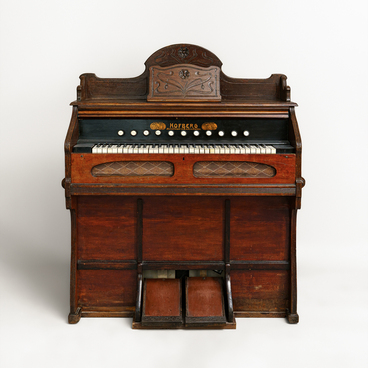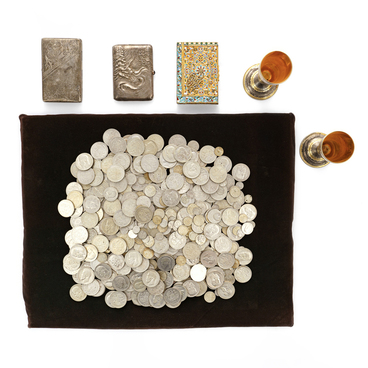The collection of the Lipetsk Regional Museum of Local Lore includes a cabinet designed to mount a gramophone and store records. The door features columns with capitals, and its middle section is decorated with stained glass — a geometric pattern of multicolored glass with brass accents. The image resembles an eye, referring to the concept of the All-Seeing Eye. The cabinet exhibits typical characteristics of the Art Nouveau style — curved lines and the use of glass — which is not surprising given that this furniture dates from the 1900s.
In 1877, Thomas Edison tested the first device for the reproduction of recorded sound, the phonograph. He was inspired by something that happened to him while working on a telephone. While reassembling the phone to improve its design, he began singing softly. At that moment, he was holding a diaphragm with a needle in his hand, and the voice vibrations made the needle prick his finger. This made the inventor realize that it was possible to record the sound vibrations and play them back using the needle. Edison used this idea to create a phonograph, which was later developed into a gramophone used exclusively as a record-playing device.


